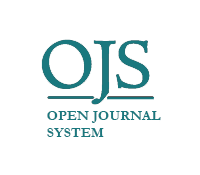Dampak Inovasi Sistem Pembayaran Terhadap Nilai Pemegang Saham Bank Dan Pengecer
DOI:
https://doi.org/10.22219/jrak.v12i2.18304Keywords:
event-study, Indonesia, national payment gateway, network externality, two-sided market modelAbstract
Artikel ini bertujuan meneliti respon pasar modal terhadap penerapan Gerbang Pembayaran Nasional Indonesia, untuk membuktikan bahwa interkoneksi dan interoperabilitas transaksi di merchant akan meningkatkan penerimaan kartu debit dan uang elektronik pada sisi permintaan, mendorong lebih banyak transaksi di merchant dan mengurangi biaya pertukaran sehingga akan meningkatkan pendapatan pedagang pada sisi penawaran. Hasil penelitian menunjukkan bahwa pasar modal merespon positif dampaknya terhadap kinerja saham bank penerbit tetapi memberikan respon negatif terhadap saham pengecer. Penelitian ini melengkapi literatur penelitian event-study terdahulu di pasar modal Indonesia serta memberikan literatur baru tentang dampak model pasar dua sisi pembayaran ritel elektronik dari sudut pandang eksternalitas jaringan antara bank penerbit dan pengecer. Penelitian ini dilakukan hanya pada pasar modal Indonesia dan hanya pada implementasi kartu debit GPN.
Downloads
References
Armstrong, M. (2006). Competition in Two‐sided Markets. The RAND Journal of Economics, 37(3), 668–691.
Armstrong, M., & Wright, J. (2007). Two-sided Markets, Competitive Bottlenecks and Exclusive Contracts. Economic Theory, 32(3), 353–380.
Arthur, W. B. (1989). Competing Technologies, Increasing Returns, and lock-in by Historical Events. The Economic Journal, 116–131.
Bank Indonesia. (2018). Materi Sosialisasi Gerbang Pembayaran Nasional. Departemen Elektronifikasi Dan Gerbang Pembayaran Nasional.
Baxter, W. F. (1983). Bank Interchange of Transactional Paper: Legal and Economic Perspectives. The Journal of Law and Economics, 26(3), 541–588. https://doi.org/10.1086/467049
Bounie, D., François, A., & Van Hove, L. (2016). Merchant acceptance of payment cards: “Must Take” or “Wanna Take”? Review of Network Economics, 15(3), 117–146. https://doi.org/10.1515/rne-2017-0011
Carbó-Valverde, S., & Rodríguez-Fernández, F. (2014). ATM withdrawals, debit card transactions at the point of sale and the demand for currency. SERIEs, 5(4), 399–417. https://doi.org/10.1007/s13209-014-0107-9
Chakravorti, S., & Roson, R. (2009). Platform Competition in Two-Sided Markets: The Case of Payment Networks. Review of Network Economics, 5(1), 118–142. https://doi.org/10.2202/1446-9022.1092
Chou, C., & Shy, O. (1990). Network Effects Without Network Externalities. International Journal of Industrial Organization, 8(2), 259–270.
Church, J., & Gandal, N. (1992). Network Effects, Software Provision, and Standardization. The Journal of Industrial Economics, 85–103.
Evans, D. S., & Abrantes-Metz, R. M. (2014). The Economics and Regulation of the Portuguese Retail Payments System. SSRN Electronic Journal. https://doi.org/10.2139/ssrn.2375151
Evans, D. S., & Chang, H. H. (2013). The Impact of the U.S. Debit Card Interchange Fee Caps on Consumer Welfare: An Event Study Analysis. 658. http://www.law.uchicago.edu/Lawecon/index.html%0Aand
Evans, D. S., Chang, H., & Joyce, S. (2015). The impact of the U.S. debit-card interchange fee regulation on consumer welfare. Journal of Competition Law and Economics, 11(1), 23–67. https://doi.org/10.1093/joclec/nhu032
Evans, D. S., & Schmalensee, R. (2005). Paying with Plastic: The Digital Revolution in Buying and Borrowing (Second). The MIT Press.
Farrell, J., & Klemperer, P. (2007). Coordination and Lock-in: Competition with Switching Costs and Network Effects. Handbook of Industrial Organization, 3, 1967–2072.
Farrell, J., & Saloner, G. (1986). Installed Base and Compatibility: Innovation, Product Preannouncements, and Predation. The American Economic Review, 940–955.
Garcés, E., & Lutes, B. (2019). Regulatory Intervention in Card Payment Systems: An analysis of regulatory goals and impact *. The Brattle Group.
Jullien, B., Pavan, A., & Rysman, M. (2021). Two-sided Markets, Pricing, and Network Effects - A Chapter Prepared for the Handbook of Industrial Organization (Vol. 4).
Katz, M. L., & Shapiro, C. (1985). Network Externalities, Competition, and Compatibility. The American Economic Review, 75(3), 424–440.
Kothari, S. P., & Warner, J. B. (2007). Econometrics of Event Studies. In Handbook of Empirical Corporate Finance (Vol. 1, pp. 3–36). Elsevier. https://doi.org/10.1016/B978-0-444-53265-7.50015-9
Lee, J., & Ji, S. W. (2018). A cross-cultural study of the competition between online and offline media using a two-sided market approach: The media revenue niche dimension. https://www.econstor.eu/handle/10419/190380
MacKinlay, A. C. (1997). Event Studies in Economics and Finance. Journal of Economic Literature, 35(1), 13–39. http://www.jstor.org/stable/2729691
Mariotto, C. (2016). Competition for Lending in the Internet Era: The Case of Peer-to-Peer Lending Marketplaces in the USA. SSRN Electronic Journal. https://doi.org/10.2139/SSRN.2800998
Pacicco, F., Vena, L., & Venegoni, A. (2018). Event Study Estimations Using Stata: The Estudy Command: Https://Doi.Org/10.1177/1536867X1801800211, 18(2), 461–476. https://doi.org/10.1177/1536867X1801800211
Rochet, J. C., & Tirole, J. (2003). Platform competition in two-sided markets. Journal of the European Economic Association, 1(4), 990–1029. https://doi.org/10.1162/154247603322493212
Rochet, J. C., & Tirole, J. (2006). Two-Sided Markets: A Progress Report. In The RAND Journal of Economics (Vol. 37, Issue 3).
Rohlfs, J. (1974). A Theory of Interdependent Demand for A Communications Service. The Bell Journal of Economics and Management Science, 16–37.
Rosse, J. N. (1970). Estimating Cost Function Parameters Without Using Cost Data. Econometrica: Journal of the Econometric Society, 256–275.
Rysman, M. (2009). The economics of two-sided markets. Journal of Economic Perspectives, 23(3), 125–143. https://www.aeaweb.org/articles?id=10.1257/jep.23.3.125
Shabgard, B. (2020). Card Payment Market and Retail Prices: An Empirical Analysis of The Effects of The Interchange Fee on Price Levels in Spain. In GEAR Working Papers (Issue 7). https://ddd.uab.cat/record/233109
Sorokina, N., Booth, D. E., & Thornton, J. H. (2013). Robust Methods in Event Studies: Empirical Evidence and Theoretical Implications. Journal of Data Science, 11(3), 575–606. https://doi.org/10.6339/JDS.201307_11(3).0010
Veljan, A., & Roaidi, A. (2021). An Event Study Analysis of the Impacts of the European Interchange Fee Regulation. Journal of Competition Law & Economics, 17(1), 63–94. https://doi.org/10.1093/JOCLEC/NHAA019
Verdier, M. (2011). Interchange fees in payment card systems: A survey of the literature. Journal of Economic Surveys, 25(2), 273–297. https://doi.org/10.1111/j.1467-6419.2009.00607.x
Wang, Q., & Ngai, E. W. T. (2020). Event study methodology in business research: a bibliometric analysis. Industrial Management & Data Systems, 120(10), 1863–1900. https://doi.org/10.1108/IMDS-12-2019-0671
Downloads
Published
Issue
Section
License
Copyright (c) 2022 Arianto Muditomo

This work is licensed under a Creative Commons Attribution 4.0 International License.

Jurnal Reviu Akuntansi dan Keuangan is licensed under a Creative Commons Attribution-NonCommercial-ShareAlike 4.0 International License.
Authors who publish with this journal agree to the following terms:
- Authors retain copyright and grant the journal right of first publication with the work simultaneously licensed under a Creative Commons Attribution-NonCommercial-ShareAlike 4.0 International License that allows others to share the work with an acknowledgement of the work's authorship and initial publication in this journal.
- Authors are able to enter into separate, additional contractual arrangements for the non-exclusive distribution of the journal's published version of the work (e.g., post it to an institutional repository or publish it in a book), with an acknowledgement of its initial publication in this journal.
- Authors are permitted and encouraged to post their work online (e.g., in institutional repositories or on their website) prior to and during the submission process, as it can lead to productive exchanges, as well as earlier and greater citation of published work (See The Effect of Open Access).










